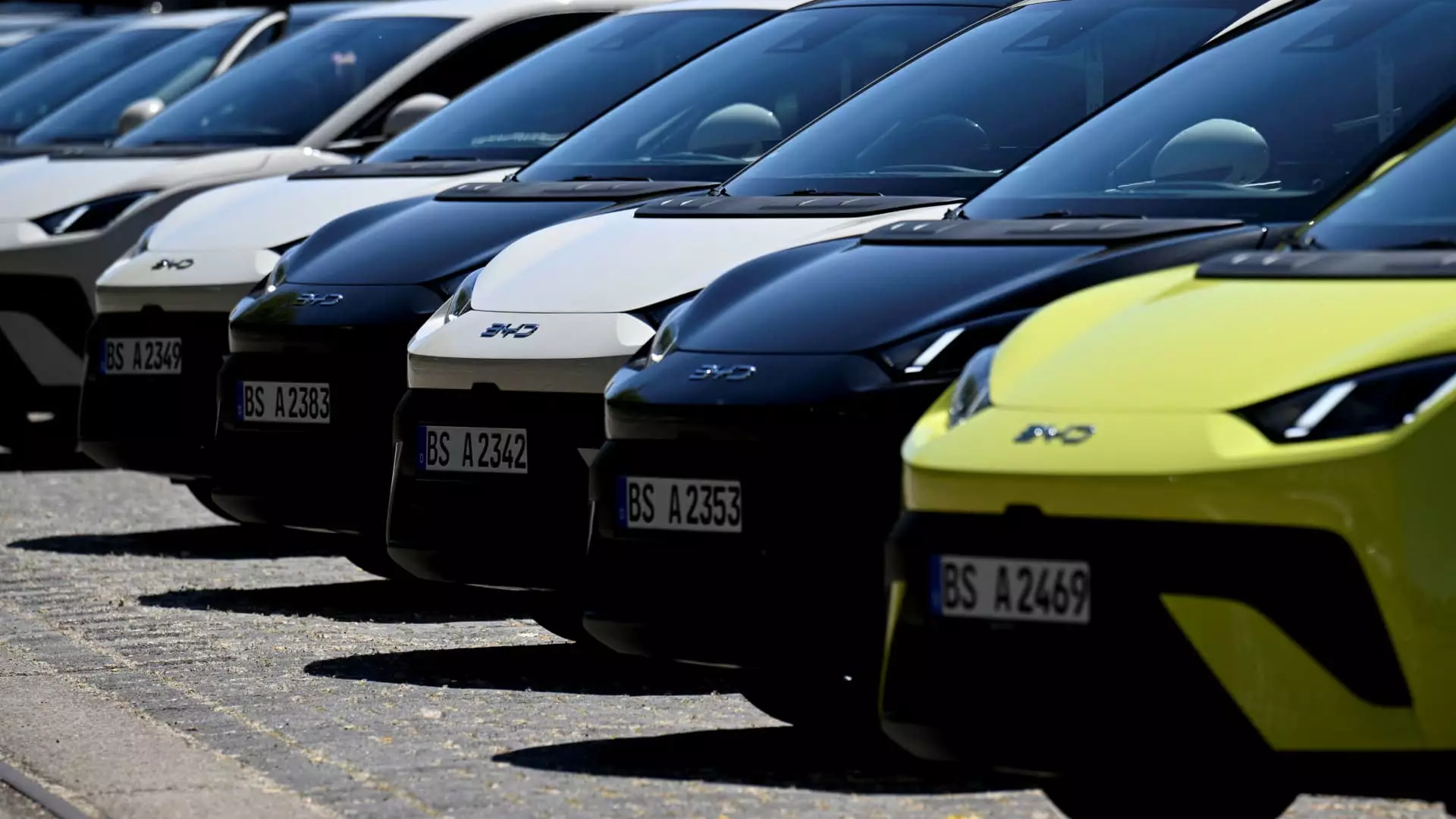China’s booming electric vehicle (EV) market has become a battlefield, with price wars raging among manufacturers desperate to secure a space in an increasingly competitive landscape. This isn’t just a minor feud; it’s an all-out war that could shape the future of the automotive industry not just in China but across the globe. The stark reality is that companies are facing existential threats as they navigate through a chaotic environment characterized by shifting consumer preferences and fierce competition. As reports indicate, Tesla’s sales have plummeted by 15% year-over-year in May, while rivals like BYD are resorting to drastic price cuts despite a reported sales increase of 14%. The ongoing turbulence begs the question: who will emerge victorious from this volatile arena?
The Rise and Fall of Market Titans
Tesla, often regarded as the gold standard in electric vehicles, now finds itself in choppy waters. Once basking in the glow of exclusive market dominance, the company is now struggling to maintain its foothold in China—an essential market for its global strategy. In stark contrast, BYD shines as a testament to resilience, although even it must resort to soft pricing tactics that indicate underlying weaknesses in growth. Analysts have pointed out that BYD’s sales are lagging behind targets, suggesting that it is not merely the leader, but rather a leader grappling with its own challenges. Yet, in an ironic twist, both companies might be forced to entertain the notion that their fates are intricately tied to price cuts and promotional tactics rather than technological innovation or brand loyalty.
Geely: The Underrated Contender
While BYD continues to dominate, Geely quietly scoffs from the sidelines. Analysts argue that its position could be more advantageous due to a well-balanced internal structure and competitive pricing. The conglomerate’s various brands—Galaxy, Zeekr, and Lynk & Co—share technology and manufacturing proficiency, allowing them to compete effectively without overextending themselves. Geely’s approach emphasizes not only sharp price points but also enhanced specifications that can attract discerning consumers looking for value without sacrificing quality. In essence, while BYD throws punches to keep its lead, Geely is meticulously crafting a strategy to outmaneuver its competitors with quietly ambitious modifications and market responsiveness.
Market Migrations: A Wave of New Entrants
The buzz surrounding up-and-coming brands like Xpeng, Leapmotor, and Li Auto illustrates a dynamic market ready to upend established players. Xpeng, a U.S.-listed startup, is making waves with over 30,000 cars delivered for seven consecutive months—an achievement showcasing its solidifier status among peers. Meanwhile, Leapmotor is slowly gaining a reputation as a cost-effective alternative, with analysts optimistic about its growth trajectory despite a net loss reported in its first quarter. The risk here? While established brands squabble, new entrants are presenting themselves as formidable competitors who are nimble enough to pivot quickly in response to market trends.
The Bigger Picture: Consequences of a Price War
At the core of this price war lies a deeper economic concern: overproduction. Current manufacturing capabilities outstrip market demand significantly, leading economists to warn of a potential industry downturn. More than 50 million units can be produced, while market demand hovers around 25-27 million vehicles annually. Such misalignment could breed chaos as automakers resort to drastic pricing measures that herald a race to the bottom. Yet, how long can this continue? As companies scramble to maintain volume, the inevitable consolidation beckons. Many might abandon ship, leading to vacancy and potential heartbreak for investors caught in the turbulence.
JPMorgan’s Strategic Outlook Amid Market Uncertainty
Industry giants like BYD still offer a glimmer of hope, particularly as they eye expansion into overseas markets. JPMorgan analysts maintain a long-term optimistic outlook, albeit with caution. There appears to be potential for revenue growth—partly through premium brands and overseas expansion—that could contribute significantly to earnings. However, the alarming prospect of a flood of budget-friendly vehicles into international markets raises concerns about sustainability and brand reputation. As tariff measures increase and competition heats up, investors are left grappling with the question of whether to transform their approaches or facilitate a long game of survival.
The EV landscape in China is reflective not just of technological advancements but of a primal survival instinct amid mounting pressures. The price war may seem like a superficial battle, but behind closed doors, it reveals complex strategies, shifting alliances, and the relentless human endeavor to innovate and thrive.


Leave a Reply